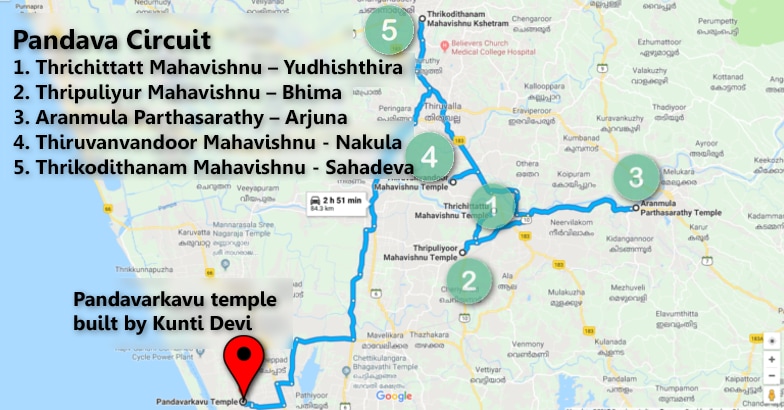Why Pandava temple circuit is incomplete without a visit to Pandavarkavu

Mail This Article
Kerala must have been soaked in piety to inspire the Pandavas to build five temples here dedicated to lord Mahavishnu. These temples are famous for the mythology, legends, folklore and rituals wrapping their history.
To a devout Hindu, a visit to these five Pandava temples is akin to a pilgrimage the five brothers undertook in Mahabharatha. Their footprints and legacies live through these temples.
It’s pretty curious that all the five temples said to be established by Pandavas are clustered around places like Chengannur and Pathanamthitta.
The Travancore Devaswom Board (TDB) is planning to set up a pilgrim tourism circuit connecting all these five temples. If the Devaswom and the government can effect this circuit, it would work to the advantage of those temples that are sidelined and don’t measure up to the development standards of the ones like the Aranmula Parthasarathy temple. The central government is more than willing to provide the much needed support for the circuit plan provided the state government is willing to execute it.
Order of visit
It is believed that, each temple was built by one Pandava brother. Devotees are supposed to start their pilgrim by visiting the temple built by Yudhishthira first and follow the order - Thrichittatt Mahavishnu temple believed to be built by Yudhishthira, Puliyur Mahavishnu temple by Bhima, Aranmula Parthasarathy temple by Arjuna, Thiruvanvandoor Mahavishnu temple by Nakula and Thrikodithanam Mahavishnu temple by Sahadeva.
The legend

Legend has it that Kunti Devi, the mother of Pandavas, who accompanied her sons on their pilgrimage also set up a temple in Alappuzha, the Pandavarkavu temple in Muthukulam. It’s believed that devotees will be truly blessed only if they complete the five-temple circuit with a visit to Pandavarkvau. Hence, devotees have put up the request that this temple also be included in the circuit. However, the request has left the Devaswom Board stumped for a workable solution to the plan as Pandavarkavu is far away from the five temples within the circuit.
Pandavarkavu is about 12km away from Kayamkulam and Haripad. Kunti Devi also trekked the Pandavan Para and several other places along with her sons while they were on exile and living in seclusion. One of the oft told stories is that Kunti sent Bhima in search of an ideal spot where she could unfailingly conduct her daily rituals. After wandering for long and failing to identify a proper spot for worship, Bhima asked the help of a potter. The potter, who was too preoccupied with his tasks, took the request lightly and with a tinge of sarcasm told Bhima to take as much space needed for an earthen pot. On hearing this, Bhima pulled out the one from the lowest in the rung.
Kunti Devi then took loose clay from the Kaliyezhathu fields close by and crafted a figure of the goddess in her vision and installed her there as Durga Devi. She then worshiped the deity everyday with offerings of thechi (Ixora Coccinea) flowers which grew around in abundance. The special kadalipazham (red banana) also became Kunti Devi’s ritual offering to her goddess. It’s again believed that the idol in clay and mud was later completely wrapped in panchaloha (five metals) to protect it from breaking apart.
To this day, kadalipazham is the main offering at Pandavarkavu and thechi still is the official flower used for poojas here.
Thus in every way, a Pandava pilgrimage can be called complete and fulfilling only after offering kadalipazham and thechi flowers at Pandavarkavu. The annual festival here falls in February.

